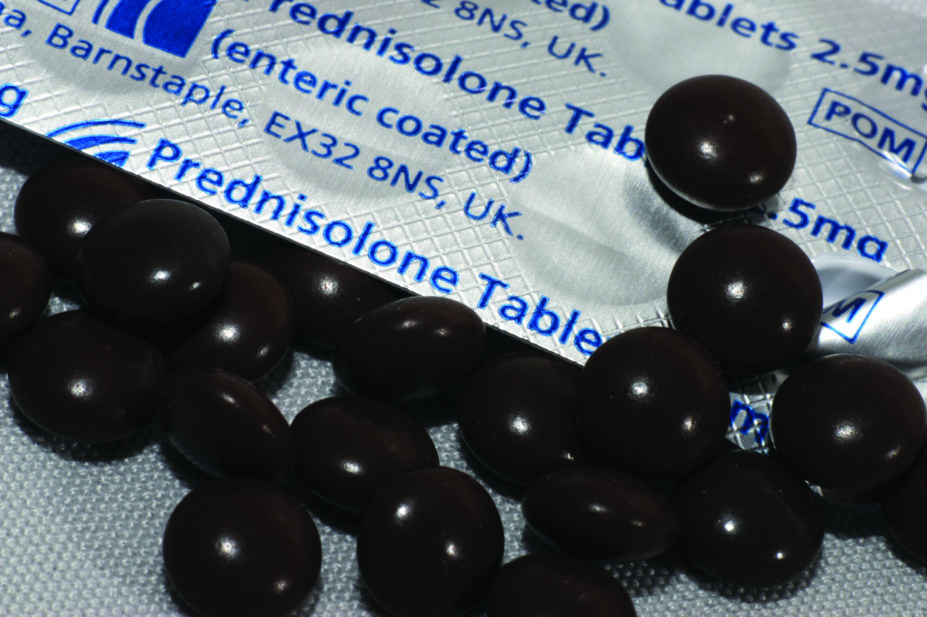
Paul Mogford / Alamy Stock Photo
Patients who are hospitalised for an exacerbation of chronic obstructive pulmonary disease (COPD) should be given an oral corticosteroid rather than an intravenous corticosteroid, according to new guidelines produced by the European Respiratory Society (ERS) and the American Thoracic Society (ATS).
The guidelines, published in the European Respiratory Journal
[1]
(online, 16 March 2017), provide a number of clinical recommendations on corticosteroid and antibiotic therapy, non-invasive mechanical ventilation, home-based management and early pulmonary rehabilitation in patients experiencing a COPD exacerbation.
Exacerbations are episodes of increasing respiratory symptoms — such as dyspnoea, cough and sputum production — which can have a negative impact on quality of life for COPD patients and can result in admission to hospital.
Jadwiga Wedzicha, lead author of the guidelines, says the new recommendations are based on more solid evidence for established therapies and include populations of patients not significantly represented in previous guidelines. “The recommendations cover the different kinds of drugs and therapies that can be used at home and in a hospital setting, answering new questions for healthcare professionals.”
Up until now, healthcare professionals have relied on advice from the UK’s National Institute for Health and Care Excellence in its 2010 guidelines[2]
on COPD and from strategy documents produced by the Global Initiative for Chronic Obstructive Lung Disease (GOLD)[3]
, an initiative launched in 1997 in collaboration with the National Heart, Lung and Blood Institute, the US National Institutes of Health and the World Health Organization.
NICE’s guidelines on COPD did not compare oral and IV corticosteroids, while GOLD says that oral prednisolone is preferable.
The new guidelines from the ERS and ATS recommend that ambulatory patients with an exacerbation of COPD be started on a short course (⩽14 days) of oral corticosteroids and be given antibiotics based on local sensitivity patterns.
Oral corticosteroids improved lung function and there was a trend towards fewer hospitalisations for patients, the guidelines say, while antibiotic therapy reduced the risk of treatment failure and increased the time between COPD exacerbations. But the guidelines point out that those who received antibiotics tended to have more adverse events, mostly mild gastrointestinal ones, such as diarrhoea.

Source: Courtesy Anna Murphy
Anna Murphy, consultant respiratory pharmacist, says that in real-life practice too many COPD patients over-rely on steroids and antibiotics, with adverse effects for patients and antibiotic stewardship
Commenting on the guidelines, consultant respiratory pharmacist Anna Murphy, based at the Glenfield Hospital, University Hospitals of Leicester NHS Trust, says NICE’s 2010 guideline for COPD is out of date and is in the process of being updated, with an expected publication date of November 2018.
“[The new ERJ/ATS guidelines] are a useful document to use alongside NICE and GOLD COPD management guidelines. From a pharmacological perspective there is little that will alter current practice,” she says.
“Although the evidence review supports the prescribing of antibiotics and steroids for an acute exacerbation of COPD, in those patients who hold ‘rescue packs’ at home we need to ensure their use is appropriate and the patient is educated on when and how to use [them].”
She adds: “Unfortunately, in real-life practice too many of our COPD patients are over-relying on steroids and antibiotics, with an impact on both patient adverse effects and antibiotic stewardship.”
References
[1] Papi A, Rabe KF, Rigau D et al. Management of COPD exacerbations: a European Respiratory Society/American Thoracic Society guideline. Eur Respir J 2017; 49: 1600791 doi.org/10.1183/13993003.00791-2016
[2] National Institute for Health and Care Excellence. Chronic obstructive pulmonary disease in over 16s: diagnosis and management. Clinical guideline [CG101] June 2010. Available at https://www.nice.org.uk/guidance/cg101 (accessed March 2017)
[3] Global Initiative for Chronic Obstructive Lung Disease. GOLD 2017 Global Strategy for the Diagnosis, Management and Prevention of COPD. Available at http://goldcopd.org/gold-2017-global-strategy-diagnosis-management-prevention-copd/ (accessed March 2017)


